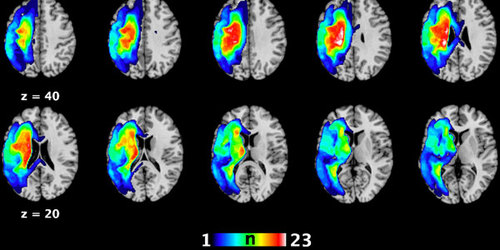Don’t you love it when an adage or truth is scientifically proven? Not that laboratory proof is needed when we know something works, but it’s just nice to be validated by science occasionally.
Talking things through has long been a cornerstone of cognitive and behavioral therapy. We just know talking about our feelings and reactions helps to put things into perspective. We’ve all experienced that release when, finally, we just “say it.”
Put it out there.
Label it.
A subset of just talking about things is referred to as journaling. Putting our thoughts and emotions into words on paper can be transformative when going through tough times.
These are things I share when talking about Caregiver Emotional Survival – but are applicable to virtually every aspect of life.
What got me down this delightful scientific rabbit hole this week was an online course offering through MasterClass. Why I started a course on “The Art of Negotiation,” by Chris Voss, I’m not sure.
Maybe it was reading about his mirroring techniques. All fascinating stuff. Good for hostage negotiators, frustrated parents of teenagers, or those looking for excellent techniques to negotiate a business deal, or asking the boss for a raise.
It was Chris Voss’s technique and description of labeling that got me Googling on the internet.
It turns out that, yes, when a person is experiencing negative emotions, getting them to label or identify that emotion will blunt the negative spiral they are experiencing. What happens is, they enlist contemplative evaluation processes in another part of the brain to find the label.
Scientifically, the part of the brain processing emotions, the amygdala, becomes less active after the subject puts a label on the negative emotion being experienced. Matthew Lieberman at UCLA, used Functional Magnetic Resonance Imaging, fMRI, to discover these things while monitoring people’s brains – when they viewed pictures that would elicit a negative emotion vs. when they verbally labeled their emotions.
In another article, Mitch Abblett explains that naming an emotion helps to tame that emotion. If you are experiencing one of those head-in-your-hands moments of emotional turmoil, putting a label on what you are feeling helps draw your hands away from your head (check out amygdala) so you can look at and evaluate what’s going on at a perspective-giving distance.
From this relative distance, we can respond to emotions and emotional situations with less of a knee-jerk reaction, and rely on a more thoughtful approach.
If you are looking to get a handle on how you are feeling, putting your emotions into words is a great first step. Using speech to do that is the preferred method, but writing is effective as well. I have had success with both methods.
Just using journaling, however, keeps your emotional cards close to your chest. At some point, putting your emotions into words that are there in the air to be heard, is the ultimate de-escalator for that amygdala buzz of feelings going on in your head.
Who we share those now-labeled emotions with is important. Maybe you want to sort out your feelings with a neutral third party before considering sharing them with others.
In any case, talking about emotions does tamp down the negative storm in the amygdala. It’s science!
So, how are you feeling?
There has been so much frustration, disappointment, and grief this year that our cumulative amygdala must be spiraling out of control. We need to be there for each other – there’s much to describe and label.
I hope this spurs Foodtalk4you readers into calling a friend or family member on a more regular basis to just check in with feelings – and be honest with yours as you pause to describe how you are really doing.
Here’s to taming negative emotions and ramping up the good ones.
In health-
Deidre
If this was of value to you, please share this post on Facebook – and subscribe so you’ll be with us every week in 2021.
Tame Reactive Emotions by Naming Them – Mindful
untitled (ucla.edu) – PDF of full study by Matthew Lieberman














One thought on “What You Say?”